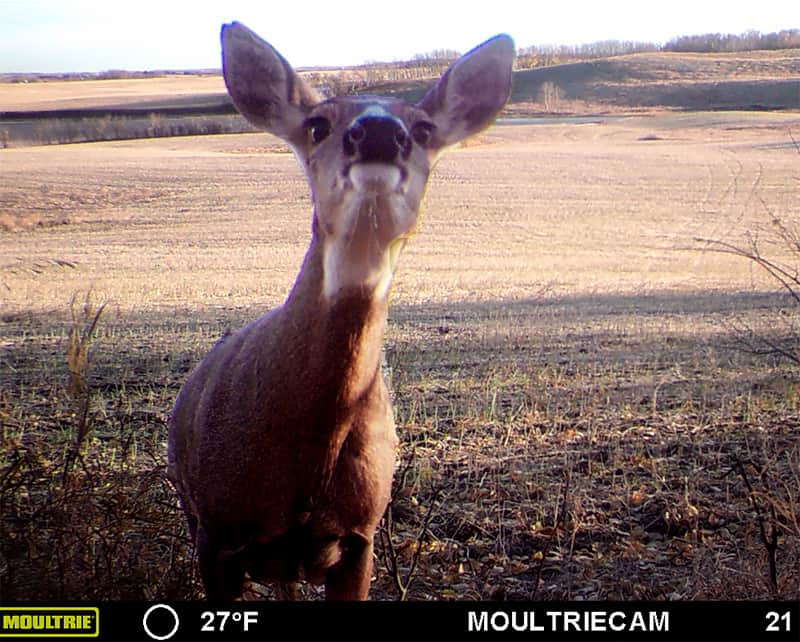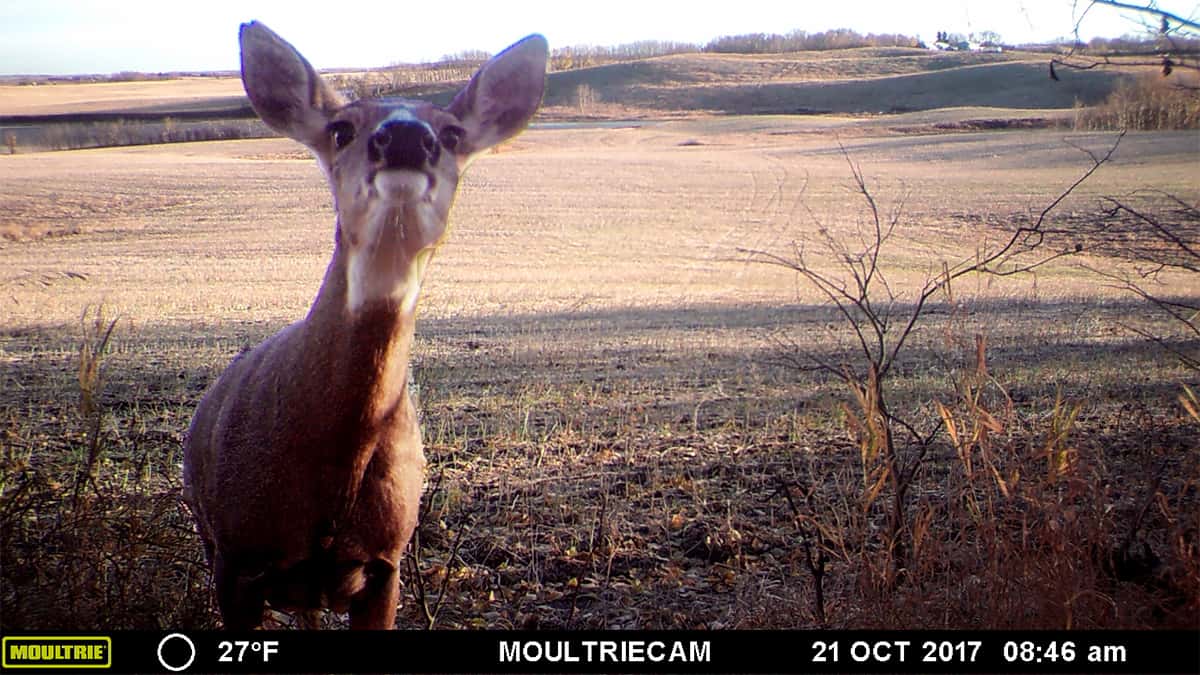
Most of us come to believe that we really know nature and the outdoors by experiencing it for an hour or two every now and then. In reality, there is much more going on out there the 99% of the time that we are not present, and wild creatures are very good at hiding themselves while watching us pass by. A great way to look deeper into their world is to set up trail cameras.
Also known as game cameras, trail cameras are self-contained, battery-powered devices that take a picture or video when motion sensors are triggered. They are often used by hunters to see what wildlife is in the area and are useful as surveillance cameras in remote situations where Wi-Fi is out of range.
Some cameras use cell phone technology to automatically send you pictures when triggered. These are great for hard-to-reach areas and even better for people with mobility issues. They also allow you to check images without disturbing the area or leaving your scent behind and possibly discouraging wildlife from returning. The disadvantage is they come with a cell phone bill.

.
My friend Dave and I initially used cameras to assist with hunting here in Alberta, Canada, but we soon learned that, beyond helping with hunting, setting up game cameras is a fun, year-round hobby on its own. Replacing the SD cards in the game cameras is a bit of an event here. When Dave comes over for our weekly “tinker-bleep-day,” one of the first things he does is to collect the SD cards from the cameras to see what is living just over the hill. It’s always thrilling, like opening a present every time.
“Let’s see what we’ve got,” I say excitedly.
“Small one, small one, there’s a big one!” says Dave, pointing at a nice 4×4 whitetail buck on the monitor. Bucks are measured by how many points their racks have, and this guy has four on each antler.
“Wow! There’s a 6×6, silhouetted in the moonlight!”
We can’t believe our luck. There are several pictures of a very large whitetail buck from different angles and with the moon behind him. We couldn’t have gotten a nicer picture if we tried.
Placement
One of the issues you’ll deal with when using these cameras is false triggers, or pictures taken with no animal present. It is important not to have tall grass or trees nearby in the field of view, as wind will move them and cause a false trigger. If possible, point your camera north. You want to avoid the rising and setting sun, which will cause washed-out pictures and false triggers, as will a low south sun.
You’ll want to place your camera where the animals are, or where they travel. A leaky grain bin with lots of deer tracks nearby turned out to be a great place for a camera, as did the point where a game trail entered a farmer’s field. Deer often get into established patterns and use the same place to exit the trees when they come out to feed for years, even generations, and these are great camera locations.
We simply set a camera at about chest height in a tree near the trail mouth where deer walk past nearly every day as they enter or exit the woods. You can use swivel mounts to place the camera straight in a leaning tree or to mount it high and pointed down for a larger field of view. The cameras work best for animals that are 10 to 20 feet away, so try to place them about that distance from where the animals are expected to be. Animals, it seems, can see the infrared lights on the cameras, as we’ve had several of them lick the camera, and moose seem to enjoy standing with their eye very close to the lens. Hiding your camera well prevents these awkward shots and decreases the chance it will be stolen by a keen-eyed and unscrupulous passerby.
A good way to have game stop and have their picture taken is to place some bait in front of the camera. In our area, the deer have an abundant supply of grain and hay. Barley, oats and bird seed seem to attract them. Once they know food is there, they keep coming back to see if there’s more. You need to check the regulations on feeding wildlife in your area, as it may be illegal. In our area we can put bait out, but it is illegal to hunt with it. We tried using apples as bait, and it seems that coyotes love them more than deer do.
With the help of cameras, we now realize there is much more going on in the wild when we are not around, especially at twilight and after dark. The wildlife seems to come out of nowhere and in surprising numbers. I usually see a deer or coyote a few times per month with my own eyes, but placing three cameras within a mile of my home has revealed that there are at least five or six whitetail and mule deer bucks and many more does, at least two moose, and many coyotes, rabbits, porcupines, ruffled grouse and more.
When we see the nearby life on the cameras, we’re reminded that we are a piece of a much larger puzzle. We may have our name written on the title of a piece of land, but it only guarantees that we get to be its caretaker for a short period of time. There are so many other pieces of the puzzle that run the show when we aren’t out there, as they have for thousands of years.
Get a game camera and see what owns the world when we have our backs turned. It’s truly amazing.
Support New MobilityWait! Before you wander off to other parts of the internet, please consider supporting New Mobility. For more than three decades, New Mobility has published groundbreaking content for active wheelchair users. We share practical advice from wheelchair users across the country, review life-changing technology and demand equity in healthcare, travel and all facets of life. But none of this is cheap, easy or profitable. Your support helps us give wheelchair users the resources to build a fulfilling life. |




Recent Comments
DINOS PITSILLIDES on Functional Fitness: How To Make Your Transfers Easier
Stosh on Functional Fitness: How To Make Your Transfers Easier
Bill on LapStacker Relaunches Wheelchair Carrying System